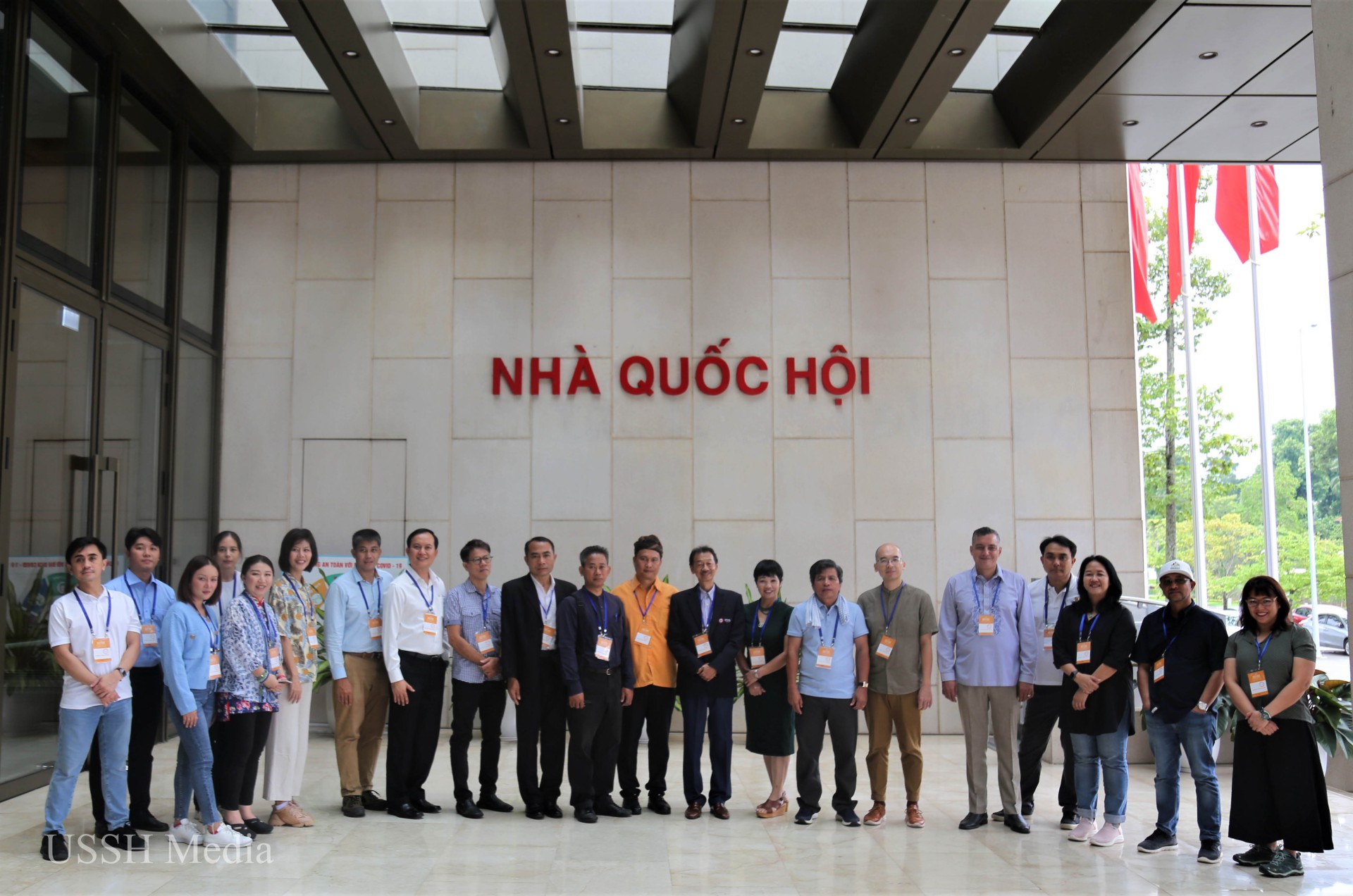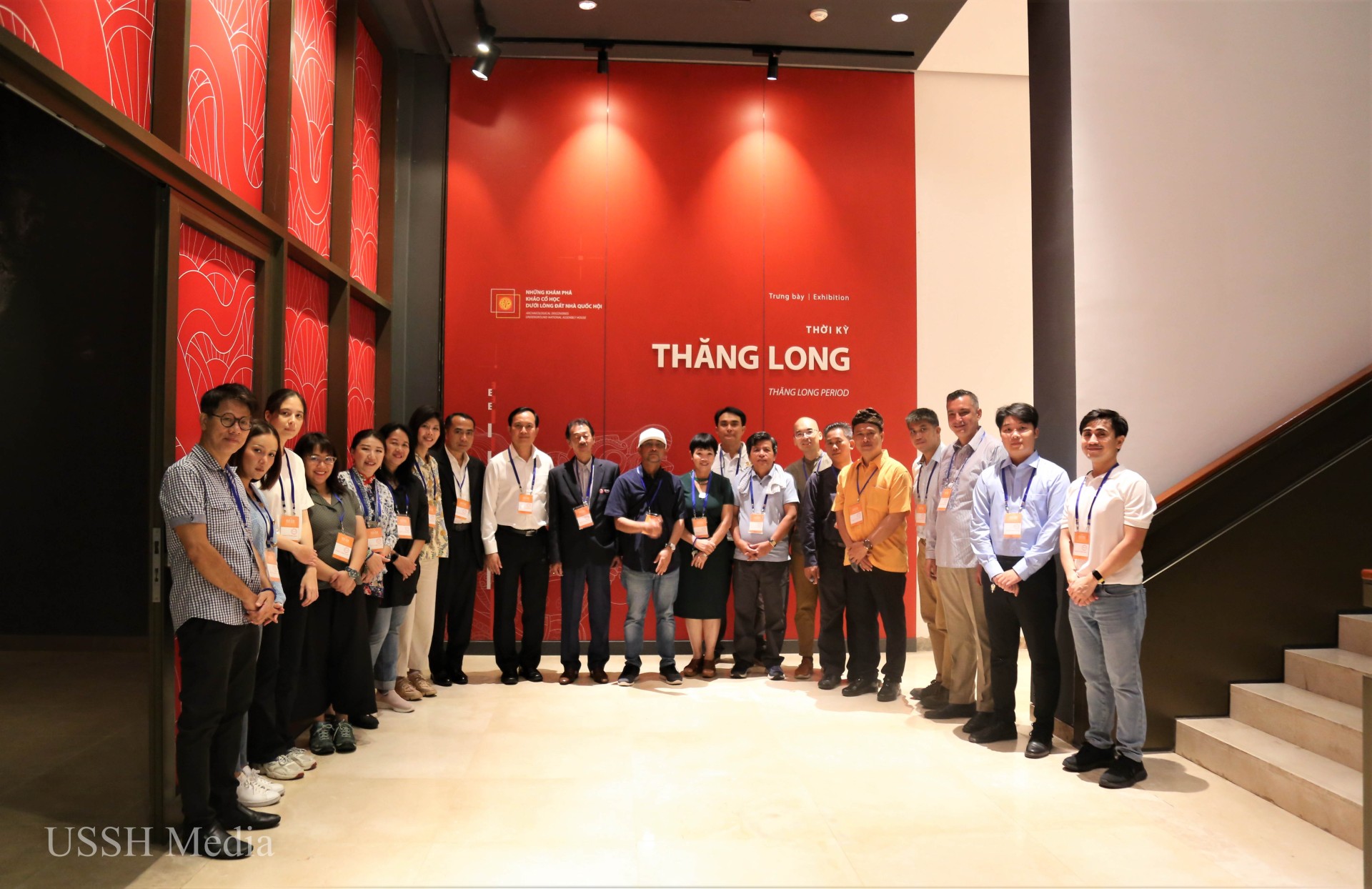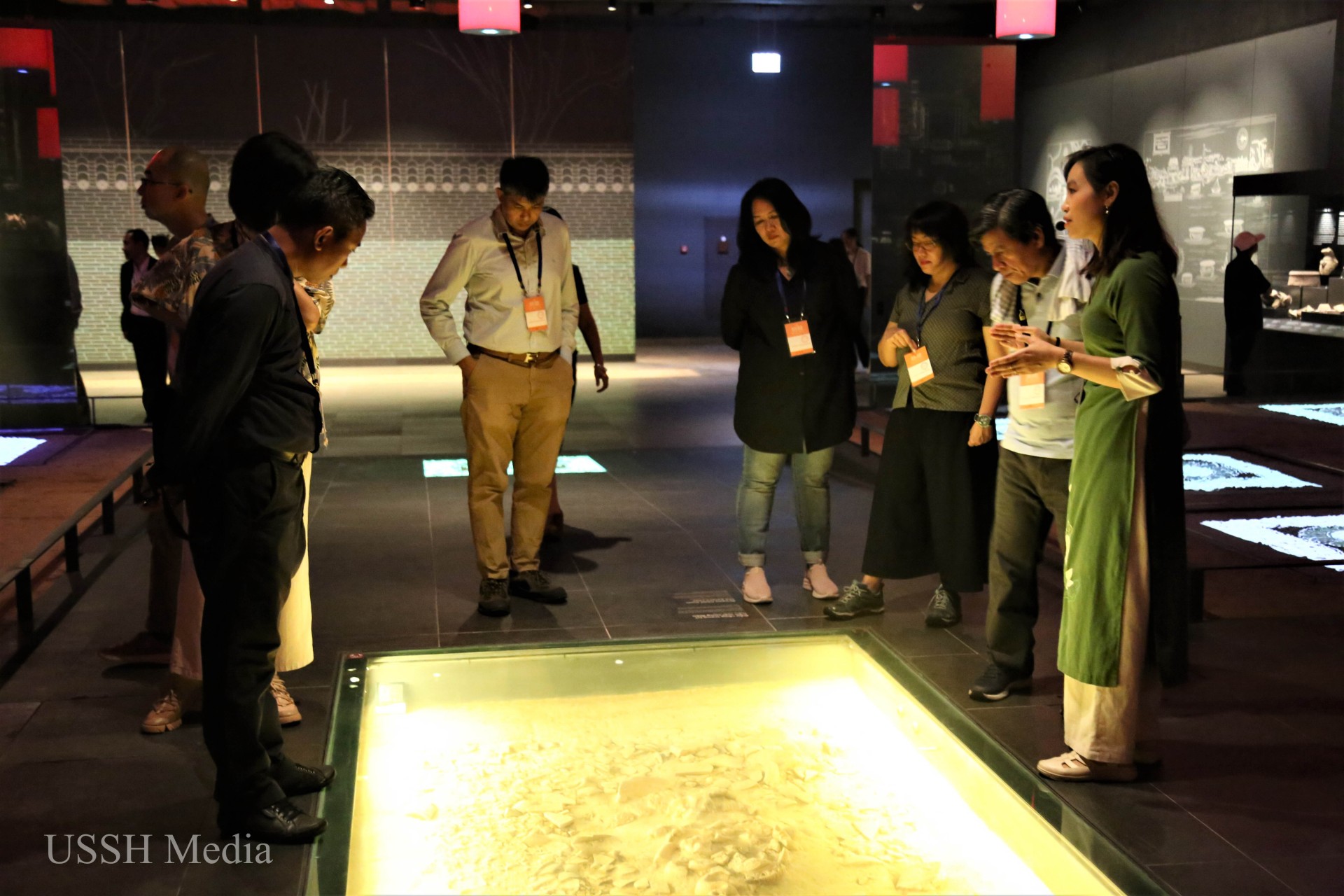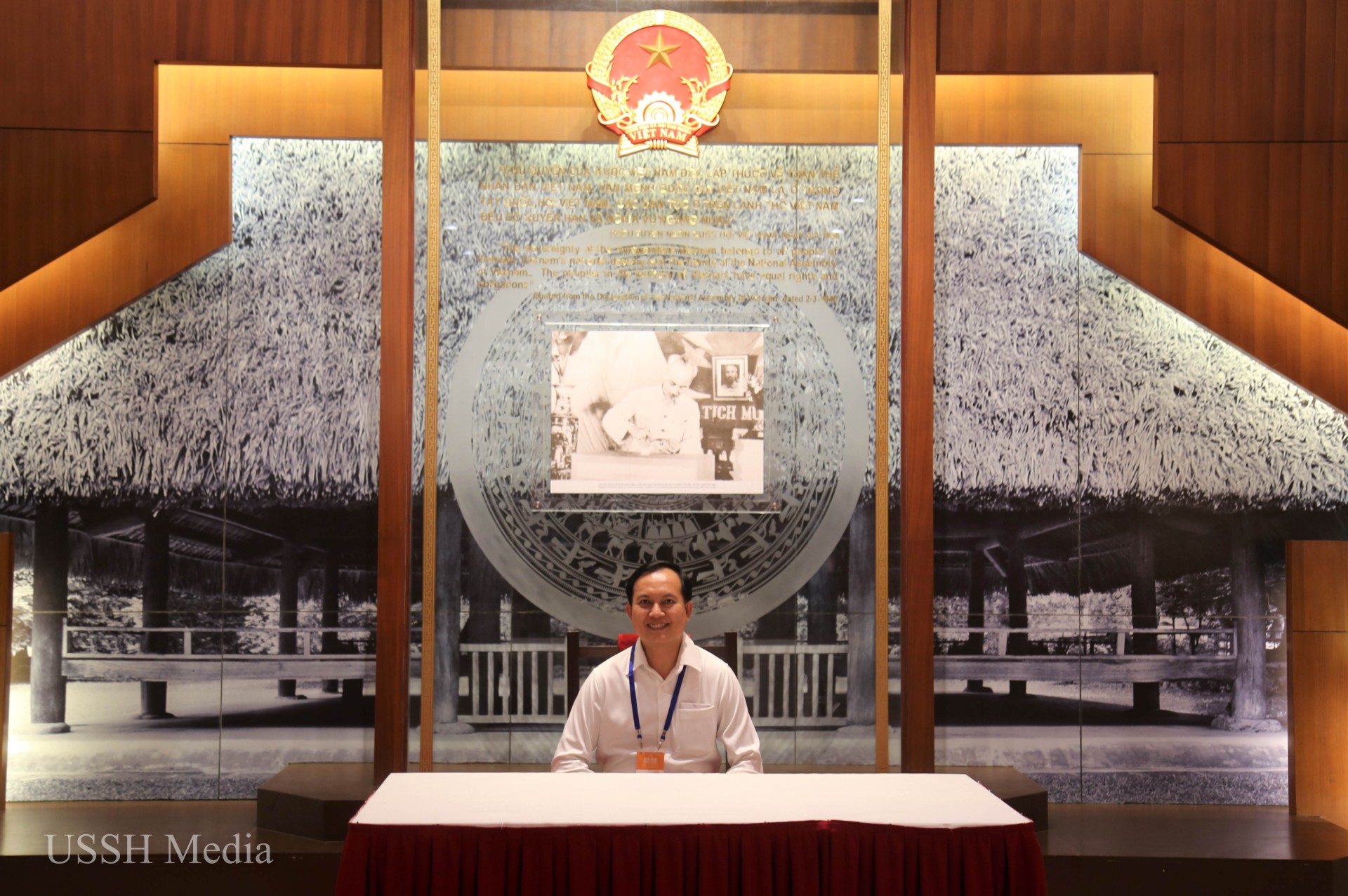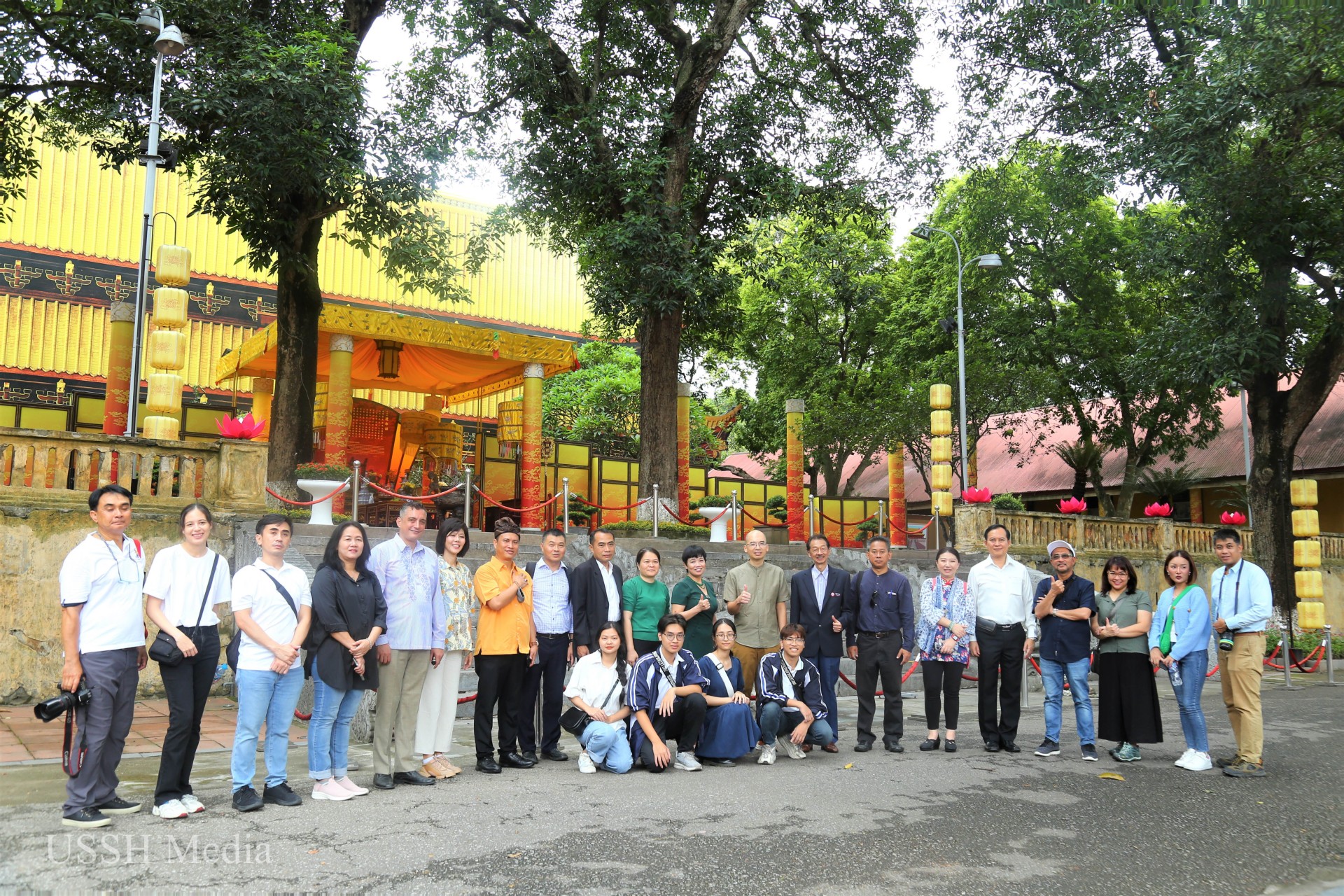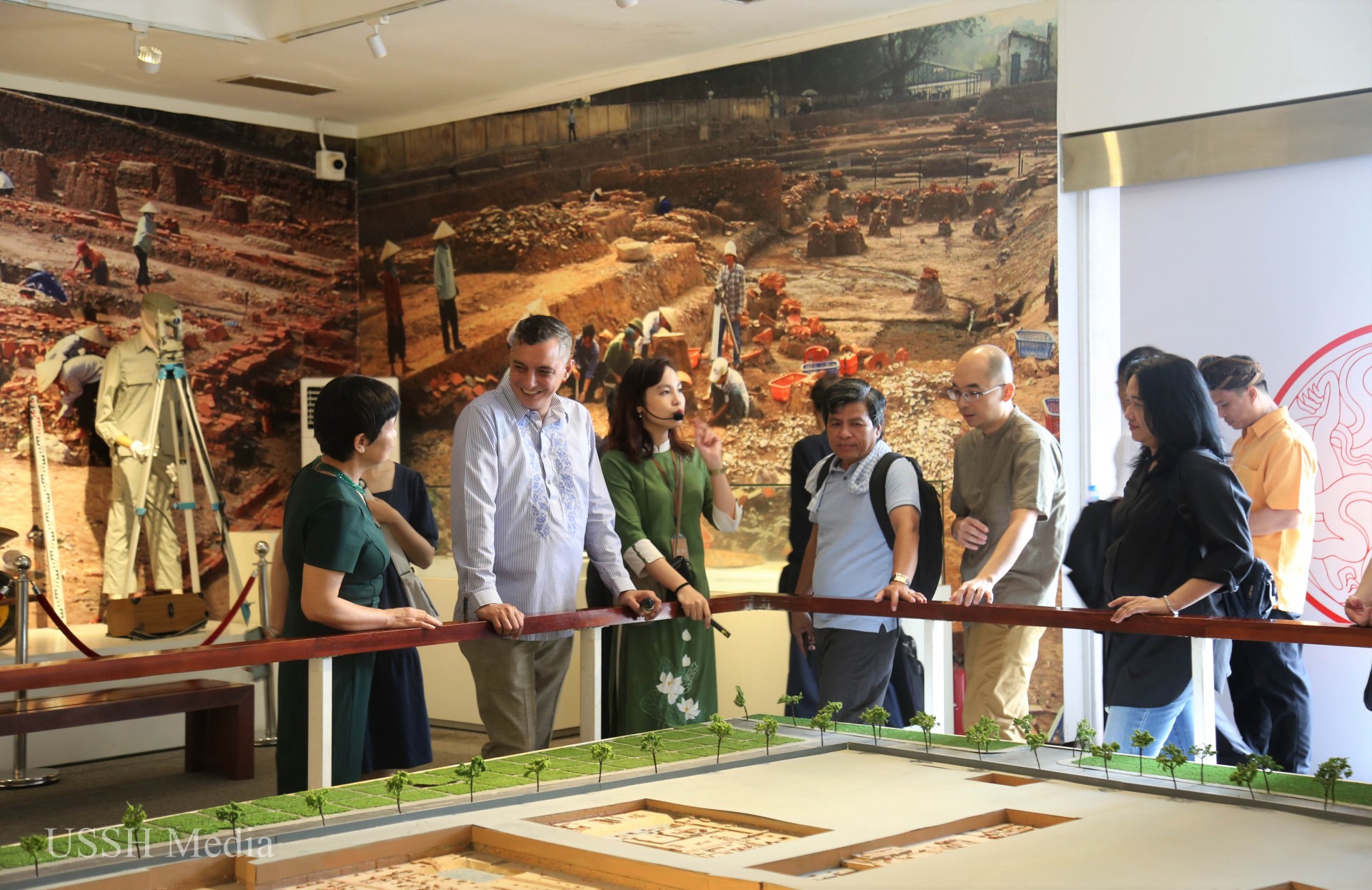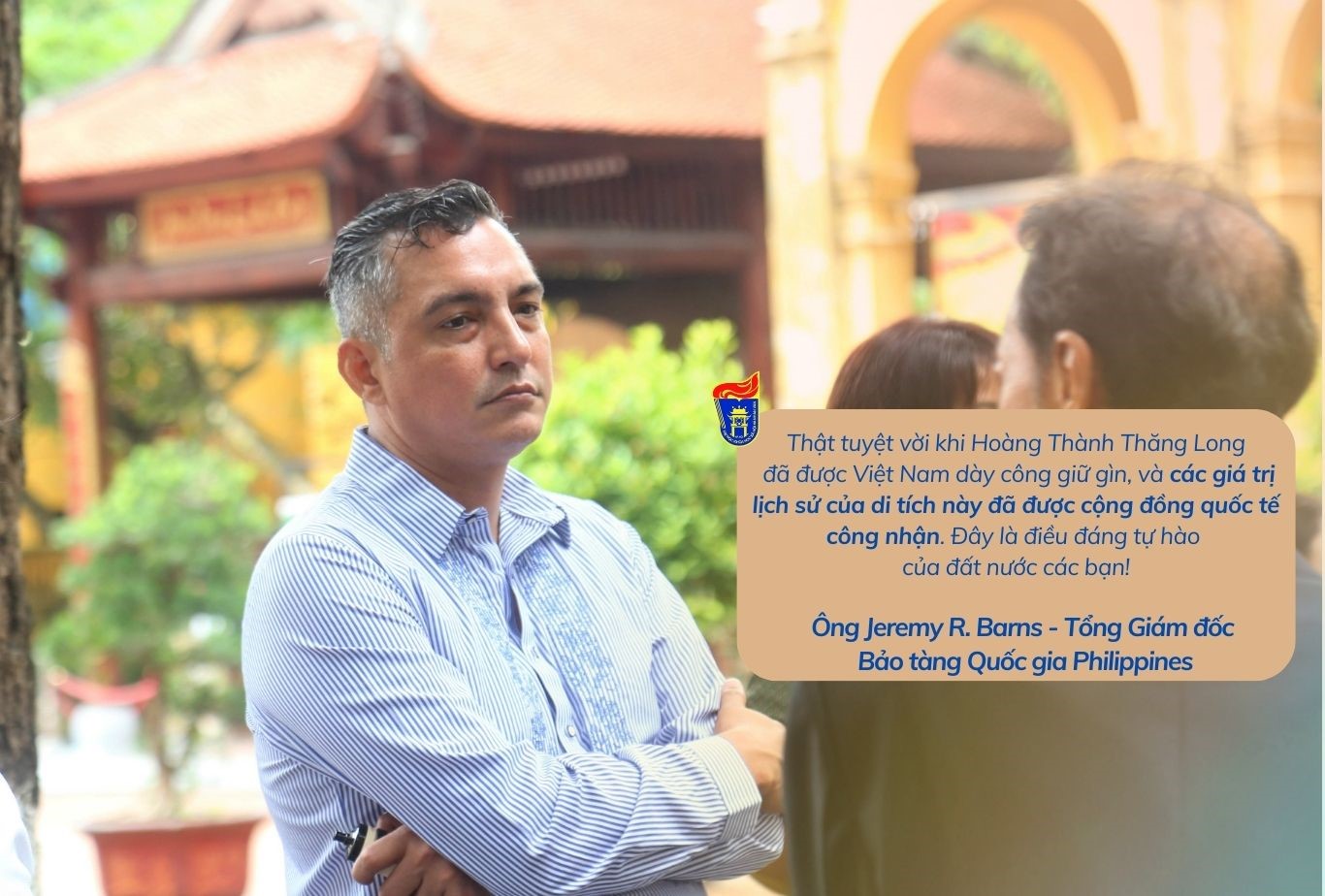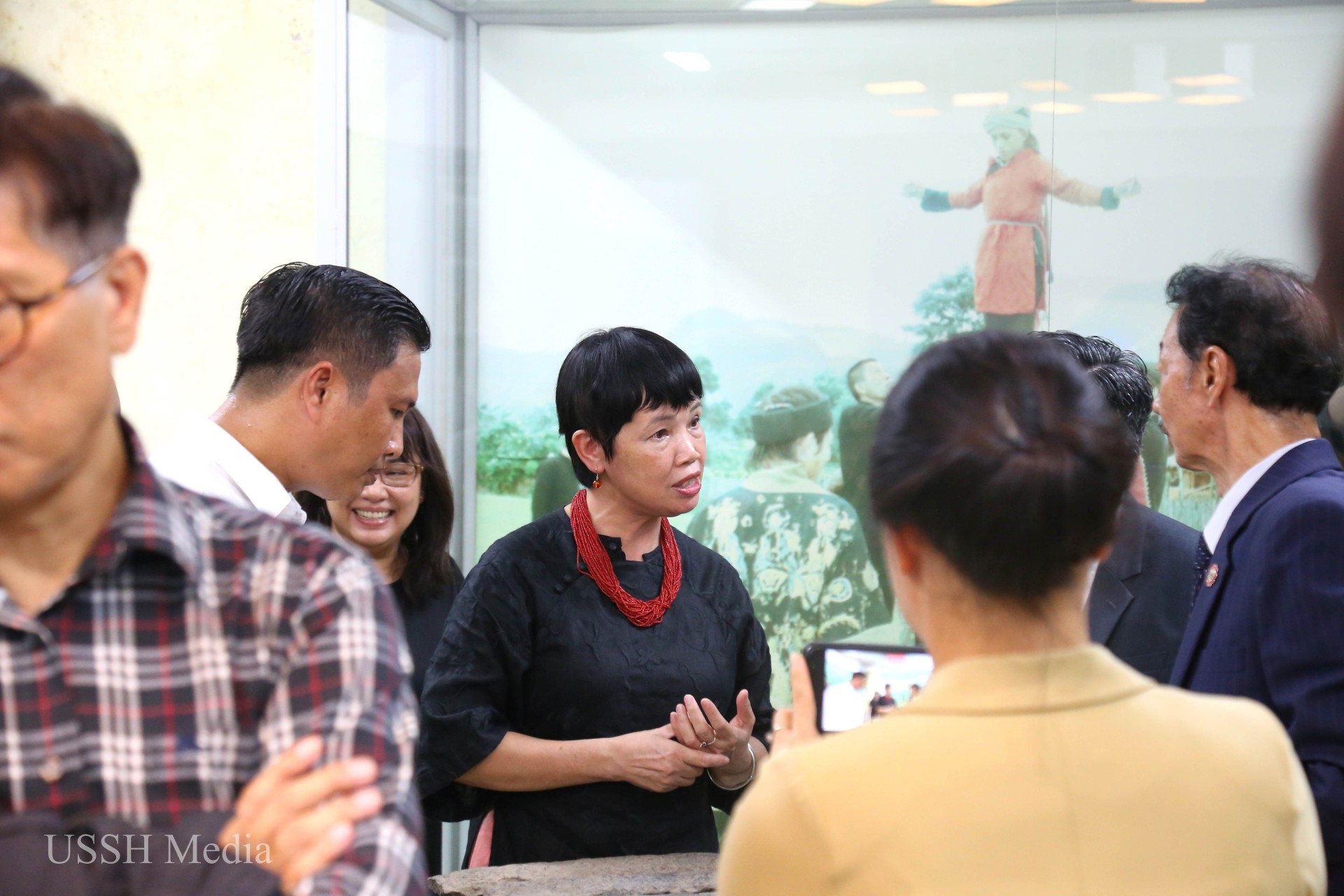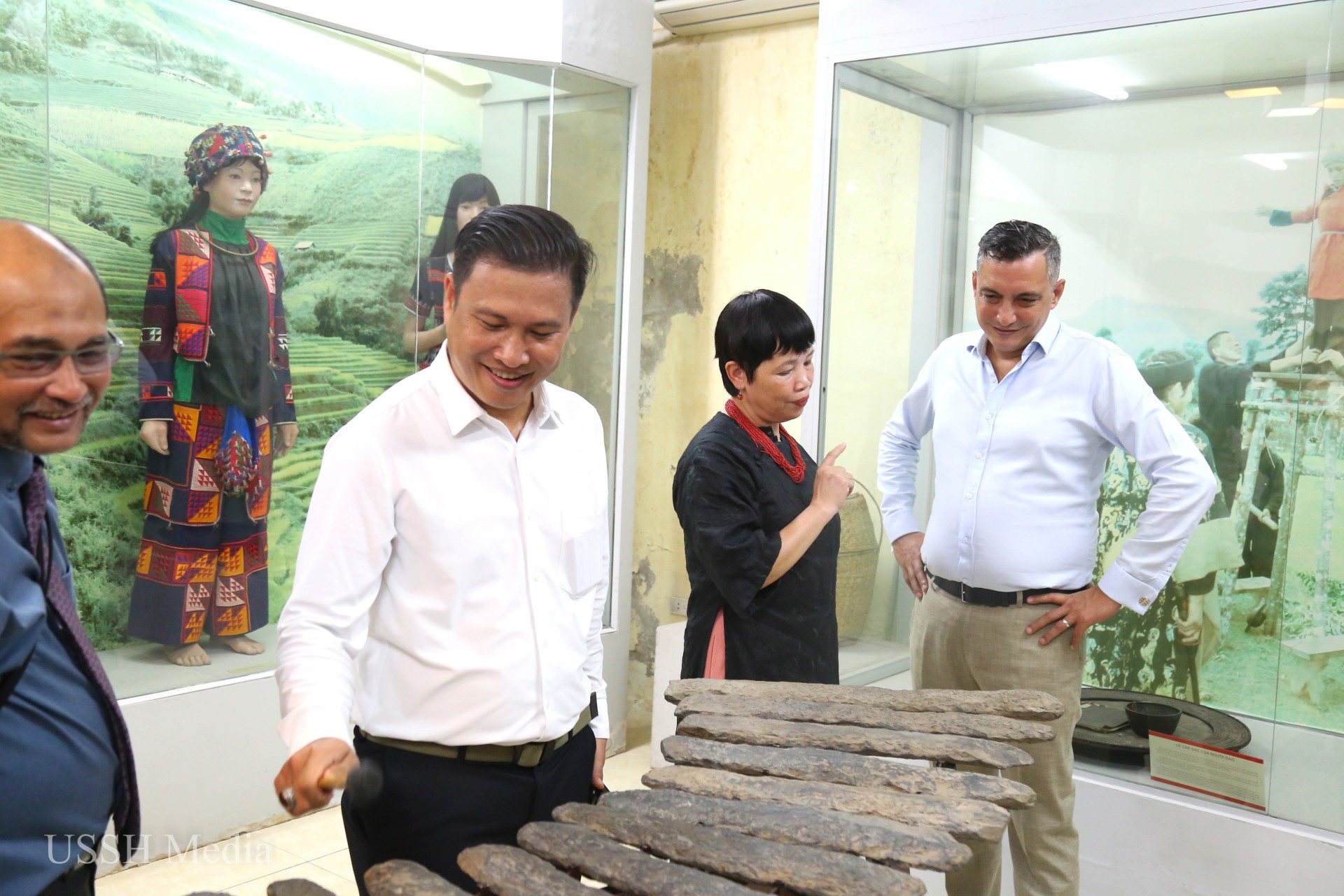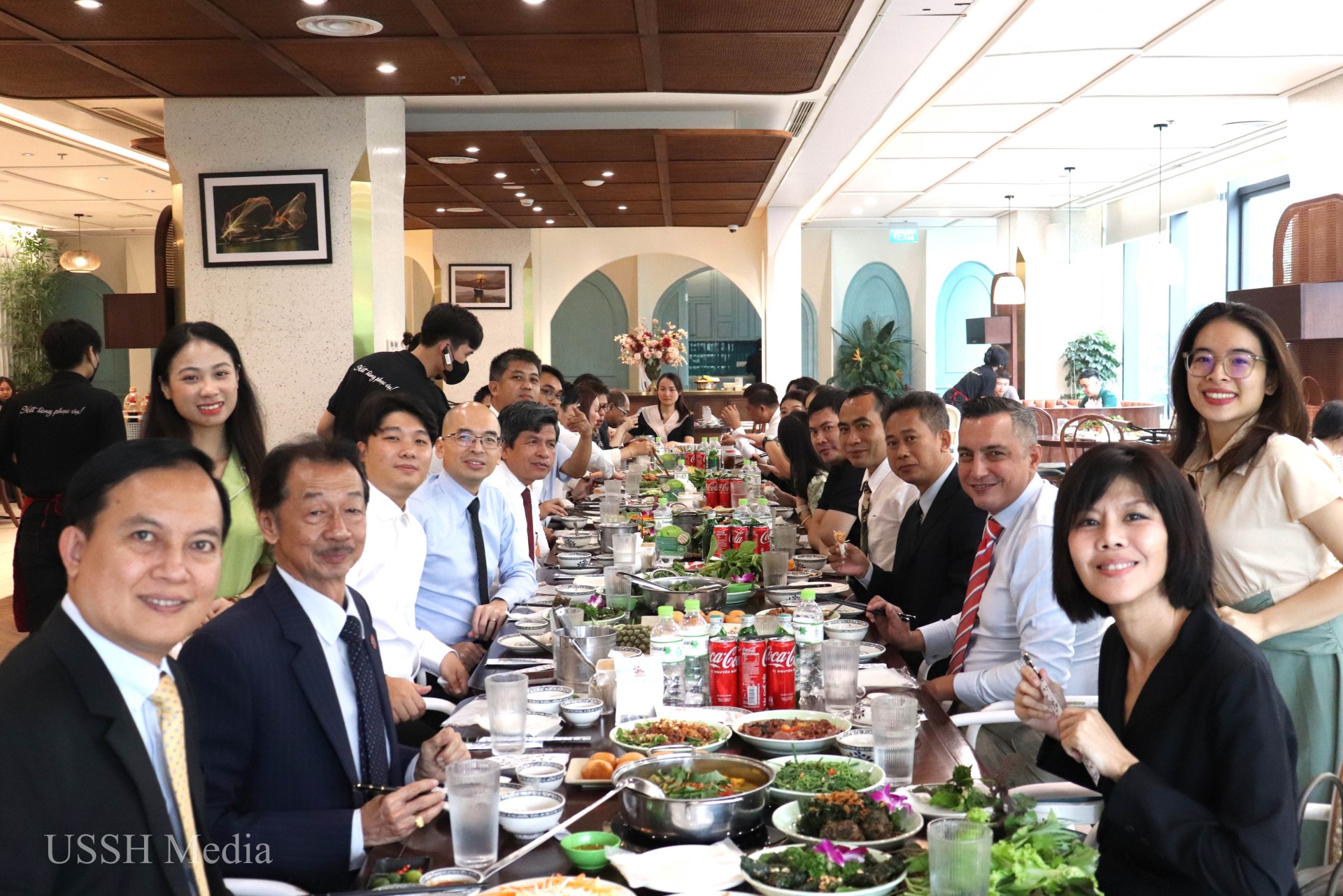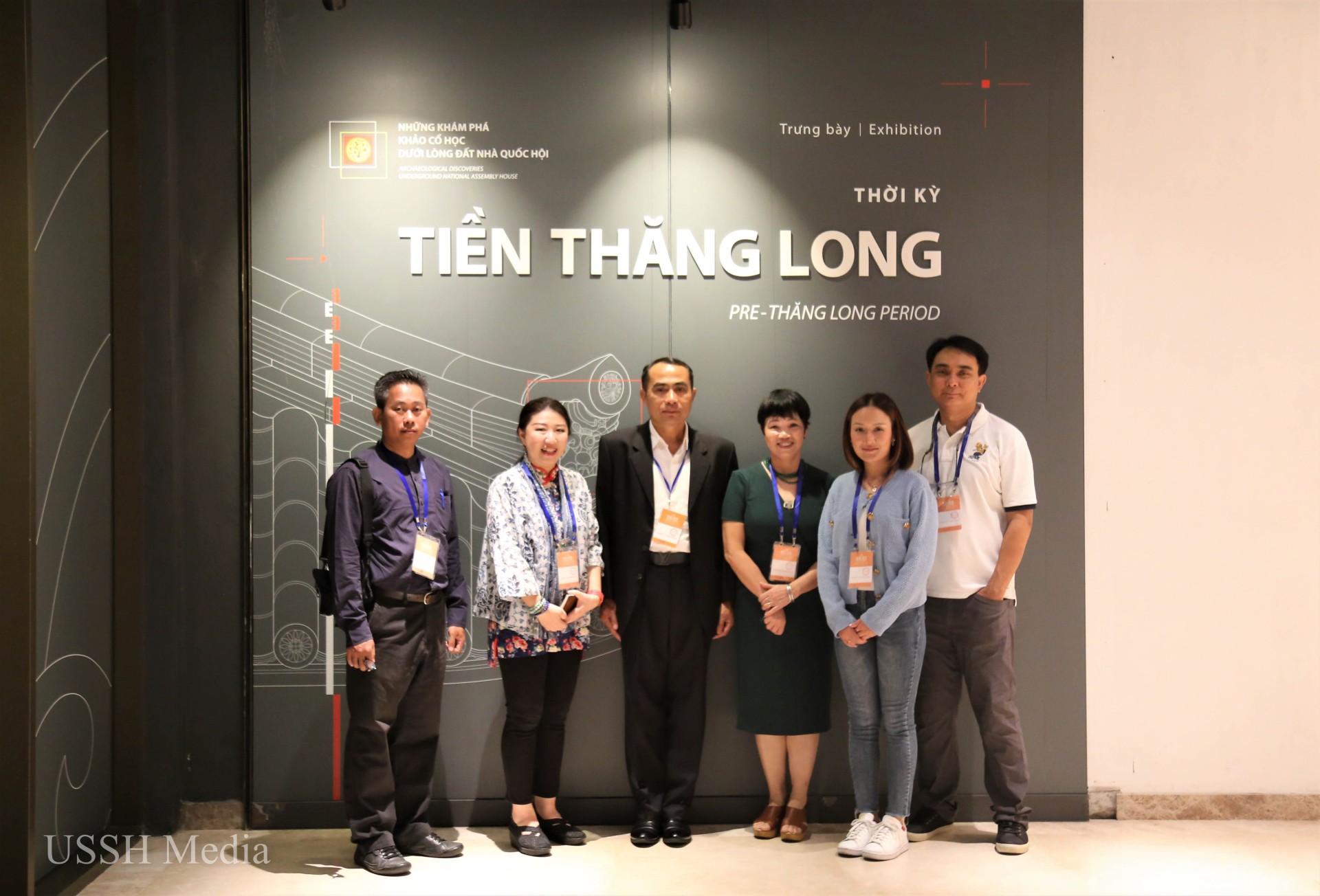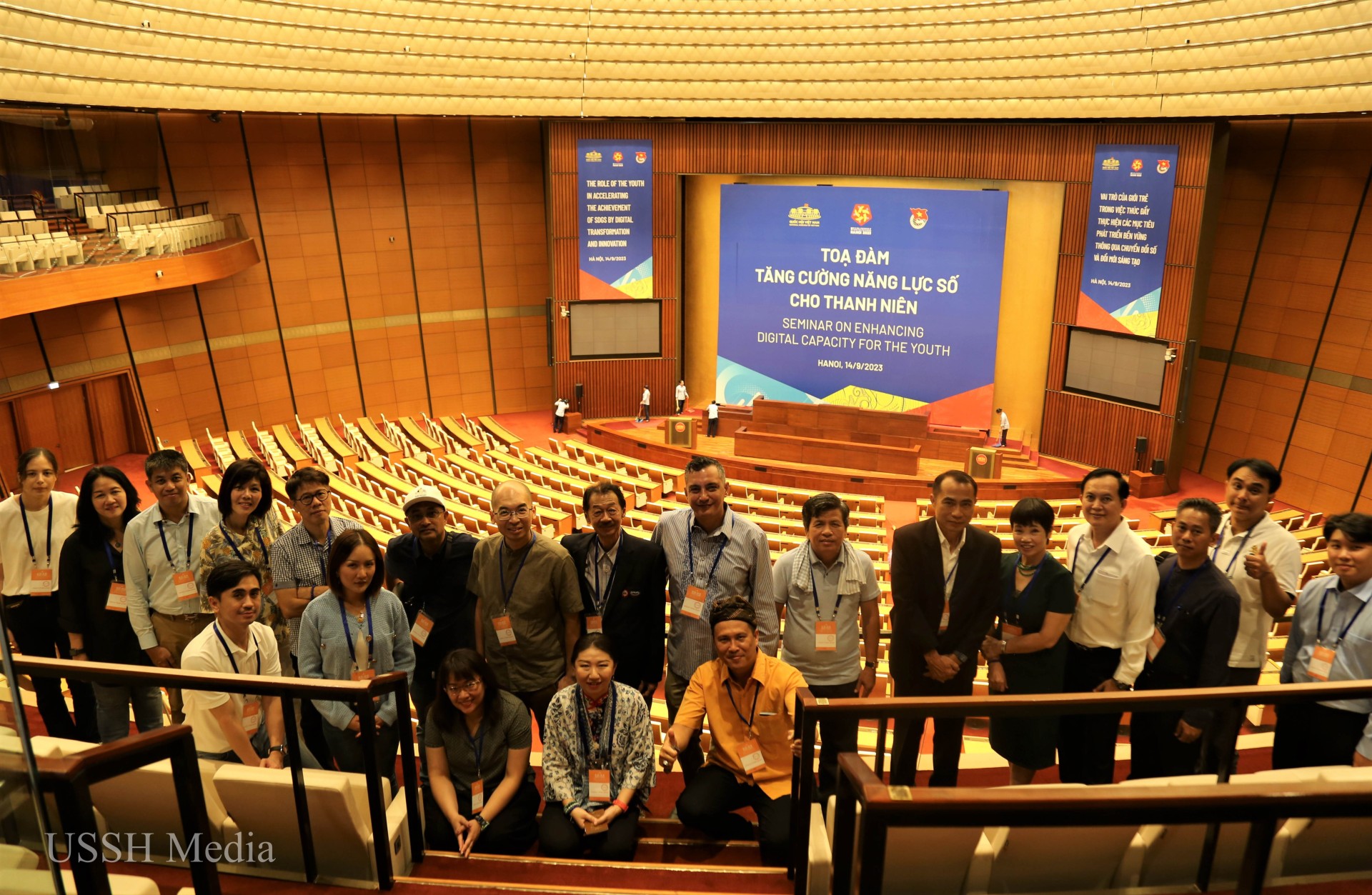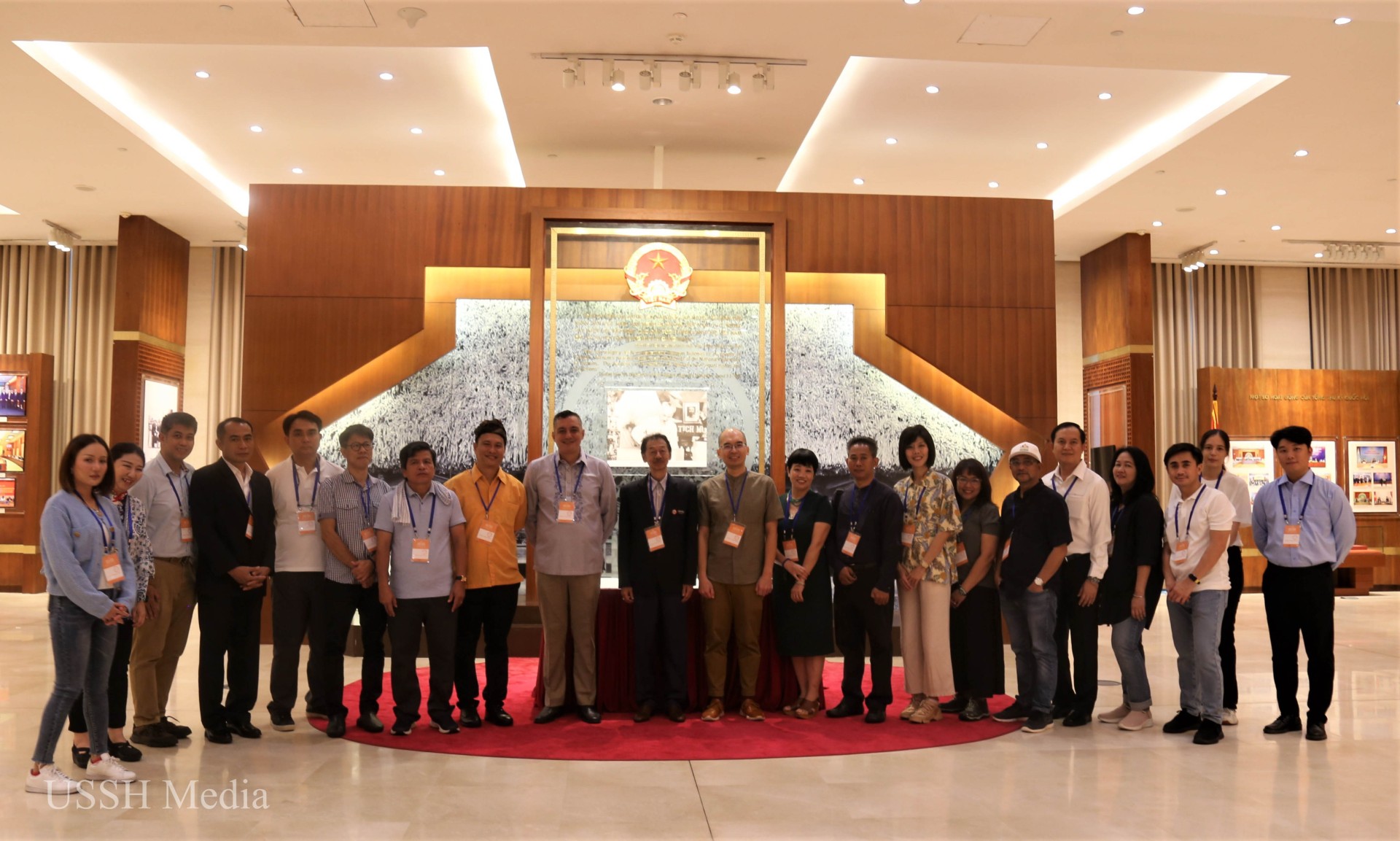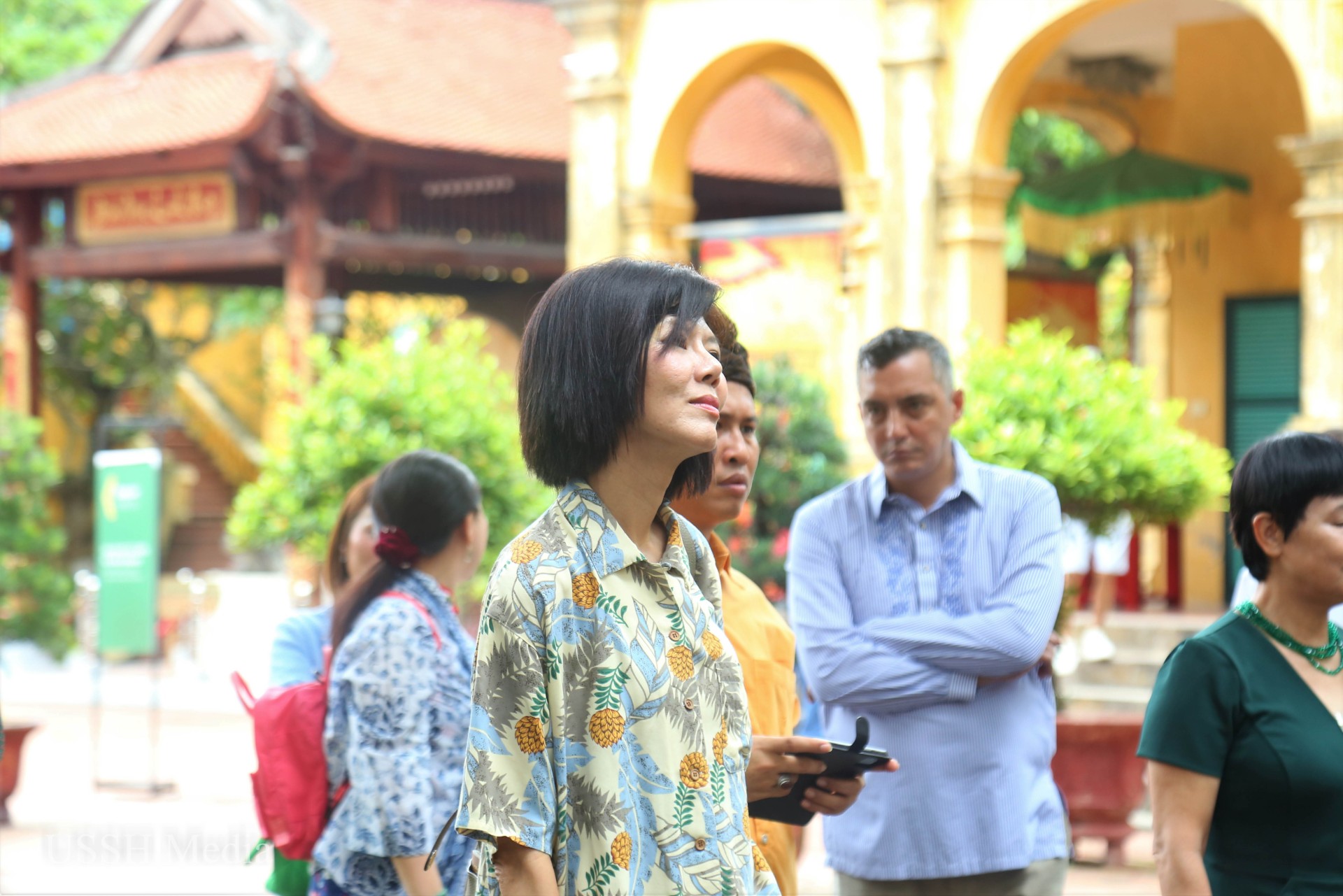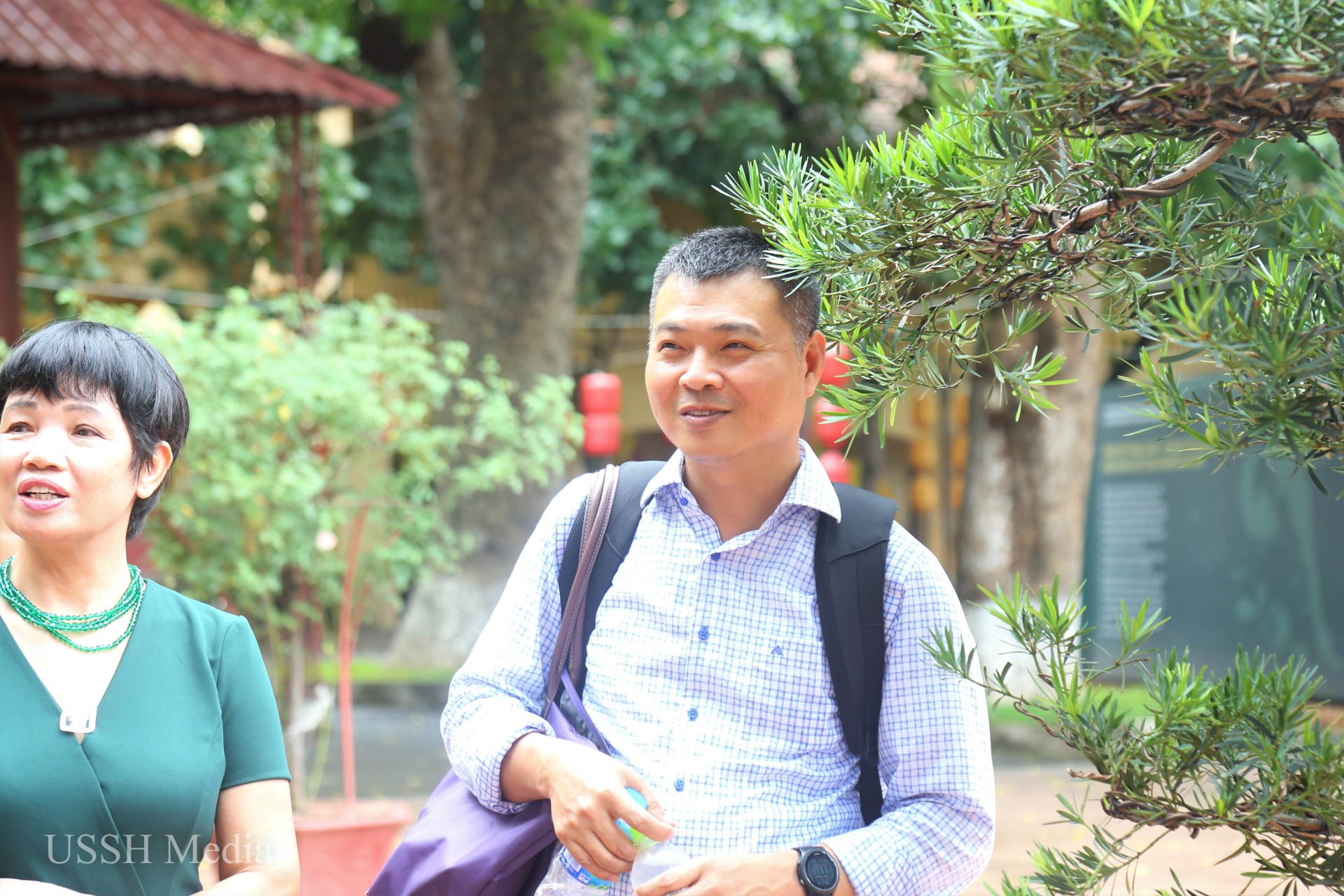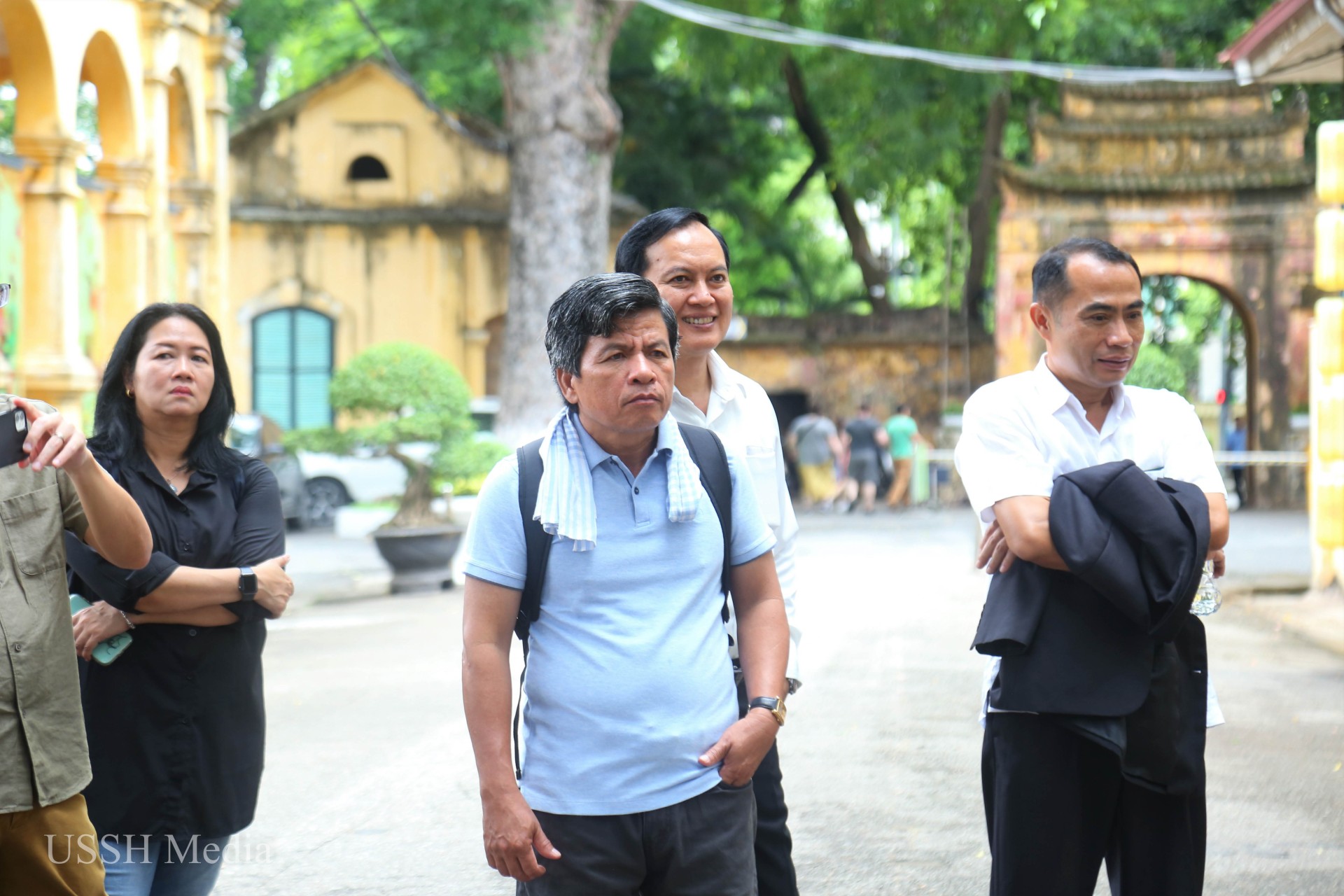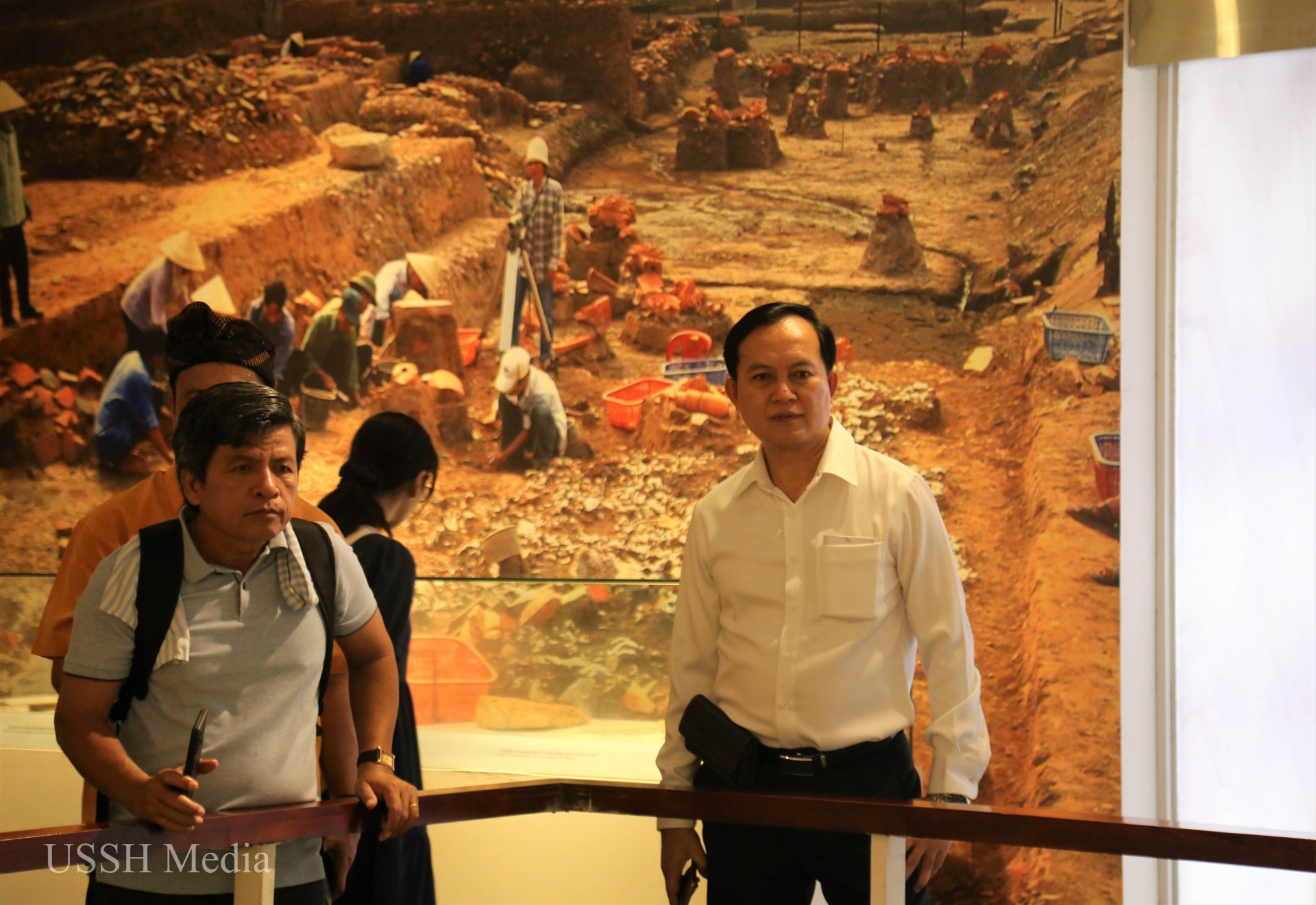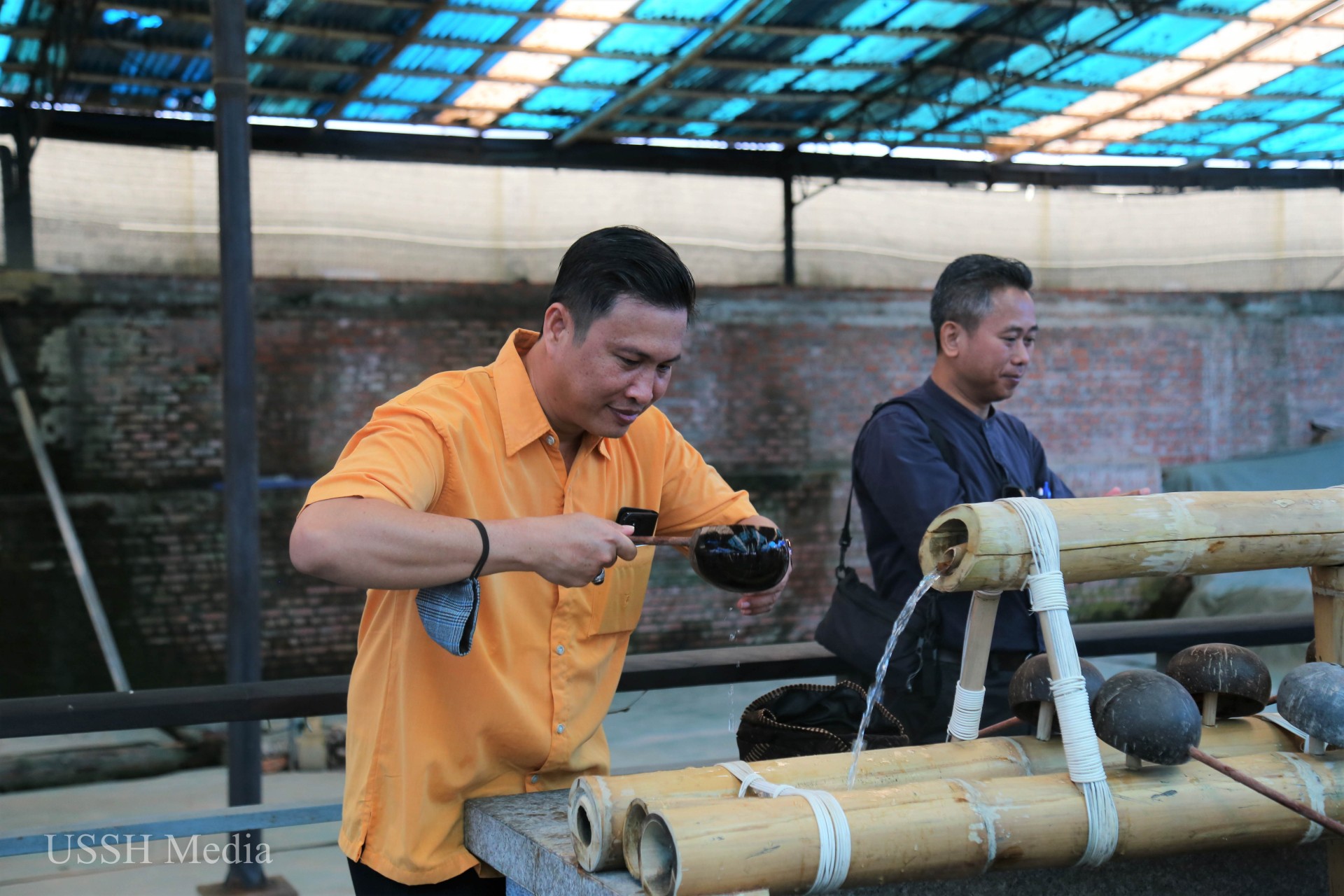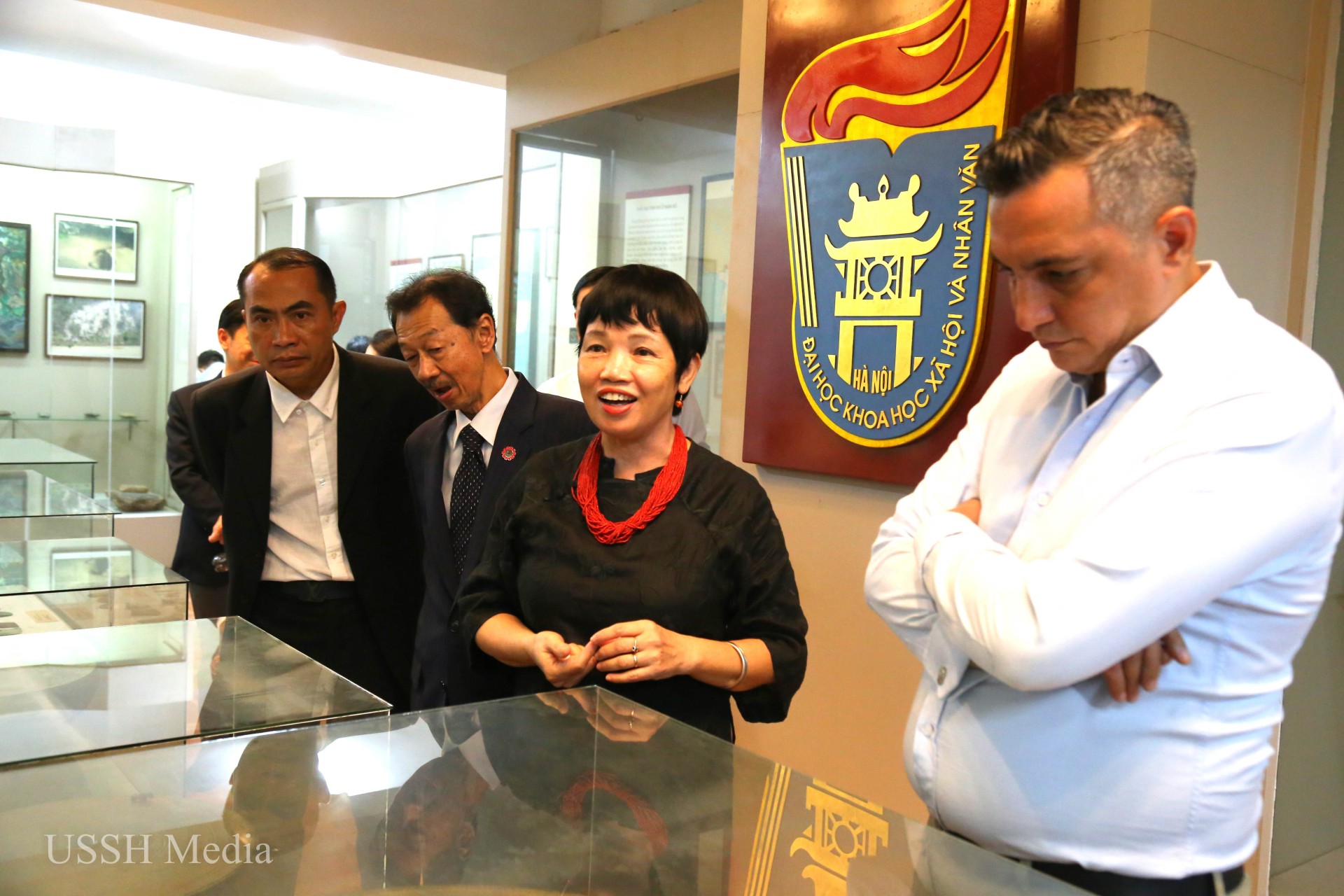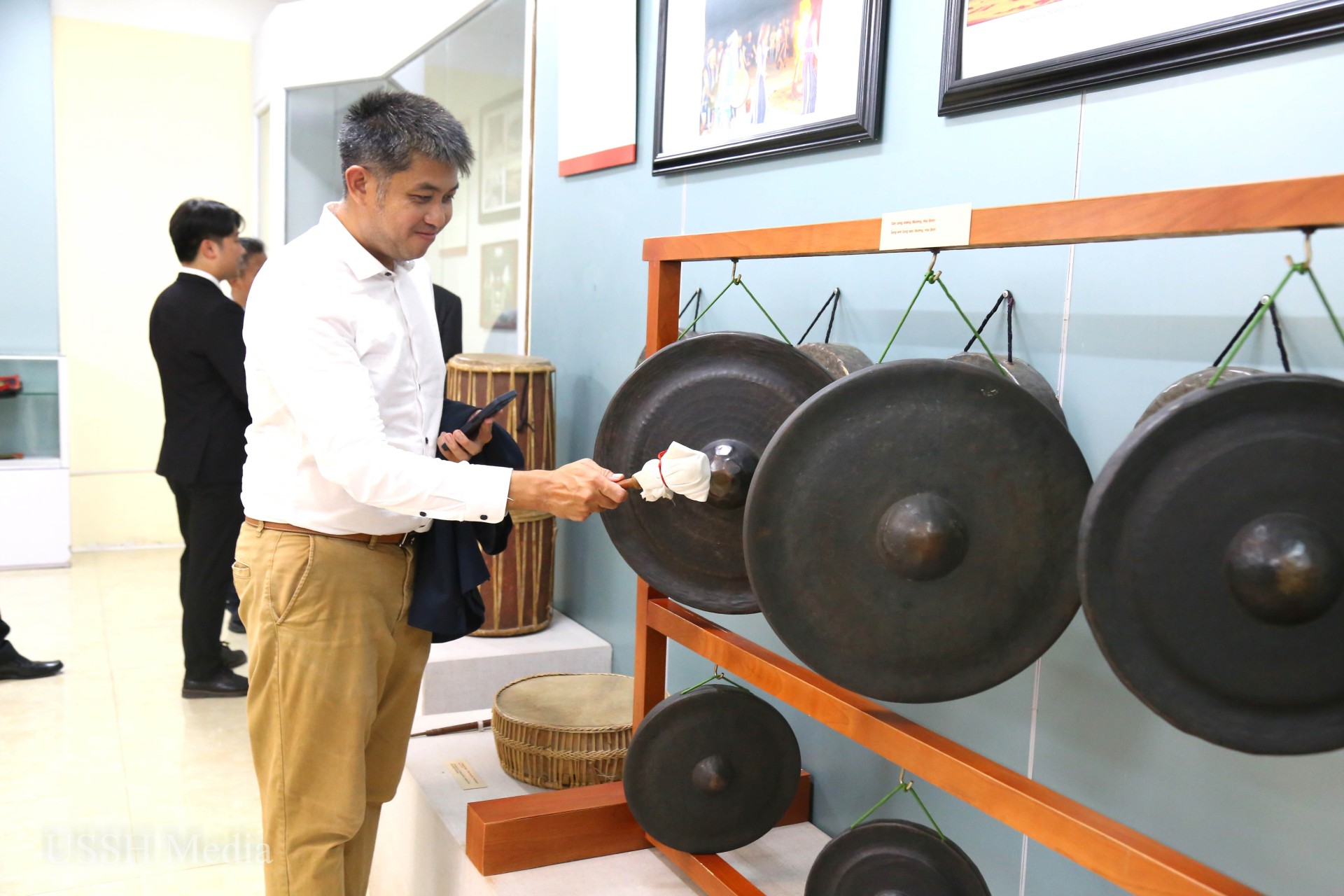Amazed by the historical and cultural value at the Vietnam National Assembly Museum.Visiting the museum in the National Assembly building, the delegates of SEAMEO SPAFA were amazed by the historical value and cultural depth of the exhibits showcasing artifacts from the period before and after the construction of Thang Long Imperial Citadel, presented in a vivid and authentic manner. Continuing to honor and preserve the nation's traditional values, this museum of ancient artifacts is a place that continues to write the historical stories for future generations of Vietnam.
The museum at the National Assembly building is the first archaeological museum in Vietnam. Spanning 3,700 square meters, the exhibition space displays over 400 artifacts and nearly 10 historical sites, selected from tens of thousands of artifacts and 140 historical sites from the foundations of this sacred land. All were discovered and preserved by archaeologists during excavations at the National Assembly construction site in 2008-2009.
Together with museum guides, Professor Dr. Lam Thi My Dung - Former Head of the Department of Archaeology, Faculty of History; Former Director of the Museum of Anthropology, University of Social Sciences and Humanities, and Dr. Nguyen Van Anh - Lecturer in the Department of Archaeology, Faculty of History, University of Social Sciences and Humanities, had discussions with the delegation from 9 Southeast Asian countries about the historical and cultural value expressed in the artifacts displayed at the museum.
The museum is divided according to archaeological stratigraphic cross-sections, tracing the timeline from ancient times to the present, and includes two main spaces: basement level 2 displays the Pre-Thang Long period – before King Ly Cong Uan issued the decree to move the capital here; while basement level 1 displays the Thang Long period – that is, after 1010, after King Ly Cong Uan moved the capital.
The museum not only brings a new image to the National Assembly building, affirming the correct policy of the Vietnamese Party and State in preserving and promoting the Thang Long Imperial Citadel heritage, but also serves as an important highlight in welcoming and promoting the value of Vietnam's national cultural heritage to heads of state, the general public, and international tourists.
SEAMEO delegates from nine Southeast Asian countries were amazed by the valuable artifacts at the National Assembly Museum, located in Ba Dinh, Hanoi.
Mr. Sathaporn Thiangtham, a representative from Thailand, visited the Museum of the Vietnamese National Assembly Building.
Speaking on behalf of Thailand, Mr. Sathaporn Thiangtham said: “The National Assembly Museum is a testament to the importance of using surviving artifacts as evidence of past historical moments, so that foreigners can get a sense of the glorious history of the Vietnamese nation when they have the opportunity to visit.”
Mr. Sathaporn Thiangtham shared: “We are very grateful to the University of Social Sciences and Humanities for giving us this valuable opportunity to visit and learn about Vietnamese history and culture at the National Assembly Museum. This is a proud experience for me during my visit to your country!”
Visit Thang Long Imperial Citadel - a place that preserves outstanding global values in humanities, art, sculpture, and architecture.The SEAMEO SPAFA delegation visited Thang Long Imperial Citadel – a complex of historical relics associated with the capital city of Thang Long, Hanoi. This massive architectural structure was built by various dynasties over many historical periods and has become one of the most important relics in the system of Vietnamese historical sites. The unique architectural traces and millions of precious artifacts partly recreate the historical process of Vietnam, stretching from the period of Northern domination under the rule of the Sui and Tang dynasties (7th to 9th centuries), through the Ly, Tran, Le, Mac, and Nguyen dynasties (1010-1945).
The SEAMEO SPAFA delegation at the Thang Long Imperial Citadel Central Relic Site - the 900th UNESCO World Heritage Site.
The Thang Long Imperial Citadel in Hanoi is the only remaining testament to the long-standing cultural traditions of the Vietnamese people in the Red River Delta throughout 13 centuries of continuous history, and which continue to this day. The archaeological layers, architectural relics, and artistic artifacts of this heritage site reflect a continuous historical chain of dynasties that ruled Vietnam in terms of ideology, politics, administration, law, economics, and culture for nearly a thousand years. It is rare to find a heritage site in the world that demonstrates such a long and continuous period of political and cultural development as the Thang Long Imperial Citadel in Hanoi.
International visitors enthusiastically explore the cultural values of the archaeological sites at Thang Long Imperial Citadel.
Admiring the long history and cultural depth of the historical artifacts at Thang Long Imperial Citadel, Jeremy R. Barns, Director General of the National Museum of the Philippines, happily stated: “I have had the opportunity to visit Vietnam many times, and I have also learned a lot about your beautiful country, so I truly appreciate the importance of the Thang Long Imperial Citadel.”
It's wonderful that Vietnam has meticulously preserved this historical site, and that the historical values of Thang Long Imperial Citadel have been recognized by the international community. This is something your country can be proud of!
Jeremy R. Barns shared his belief: “As a member of the Board of Directors of SPAFA from the Philippines, I know that SPAFA has the potential and capacity to support and provide technical assistance for restoration and preservation projects of historical sites in Vietnam. In addition, our colleagues at the University of Social Sciences and Humanities, Vietnam National University, Hanoi, have conducted many valuable studies on the preservation of these historical and cultural heritage sites. This will be valuable experience for heritage preservation activities in Vietnam in the future.” Jeremy R. Barns added that not only SPAFA but also other funds and organizations should participate in and support projects on the preservation of historical and cultural heritage in Vietnam.
Visit the Museum of Anthropology - the first museum of a university in Vietnam.During their time at the University of Social Sciences and Humanities, VNU Hanoi, the SEAMEO SPAFA delegation visited the Museum of Anthropology on campus.
The Museum of Anthropology of the University of Social Sciences and Humanities, Vietnam National University, Hanoi, is the first university museum in Vietnam and one of the models that connects education with practice. Besides its function as a teaching museum, the museum also organizes scientific research activities and provides scientific and cultural services; and conducts research applying scientific and technological advancements in the collection, display, preservation, and management of artifacts, specimens, and documents.
Professor Lam Thi My Dung, former Director of the Museum of Anthropology, is discussing the cultural values of the artifacts at the museum with the SEAMEO visiting delegation.
Since its establishment, the Museum of Anthropology has gradually become a familiar destination for students and faculty members to learn about the history and culture of the nation. The museum encourages visitors and researchers to explore the past and interpret the cultural life of Vietnamese communities, both past and present. The museum's main target audience is faculty and students of the University of Social Sciences and Humanities.
Currently, the Museum has two permanent exhibition rooms on Archaeology, Anthropology, and Vietnamese Culture, and three 3D models showcasing the museum, the Temple of Literature, and the human body. The virtual museum features 24 fascinating exhibition themes on agriculture, pottery, prehistoric metallurgy, Thai weaving, Dong Ho painting, Confucian history and the imperial examination system, and Vietnamese temple architecture. The Museum of Anthropology also collaborates with the Vietnam National Museum of History, the Vietnam Museum of Ethnology, and the UNESCO Association for the Preservation of Antiquities in Vietnam in participating in thematic exhibitions.
Delegates from Indonesia experienced playing the stone xylophone – one of the oldest percussion instruments in Vietnam, currently on display at the Museum of Anthropology.
During their participation in the 2023 SEAMEO SPAFA annual meeting in Hanoi, the delegation from Southeast Asian countries experienced traditional Vietnamese dishes such as spring rolls, sticky rice cakes, beef pho, Hue beef noodle soup, fish sauce hotpot, egg coffee, etc.
The cultural and historical beauty of Hanoi's landmarks, museums, and rich culinary arts, along with the warm feelings and thoughtful hospitality of the Vietnamese people in general, and of the Board of Directors, lecturers, and staff of the University of Social Sciences and Humanities, Vietnam National University, Hanoi in particular, brought satisfaction and affection to the SEAMEO SPAFA delegation towards the S-shaped land of Vietnam.
Today, our international friends will depart from Hanoi. VNU-USSH congratulates the SEAMEO SPAFA Annual Meeting 2023 on its great success! Goodbye and we look forward to seeing you again in future projects at the University of Social Sciences and Humanities, VNU, as well as in Vietnam!
Let's preserve the memorable images of delegates from 9 Southeast Asian countries – members of SEAMEO SPAFA – at various landmarks in Vietnam:
The press reported:
Vietnam National University, Hanoi:Delegates from Southeast Asian countries were amazed by the cultural and historical value of the historical sites and museums in Hanoi.
